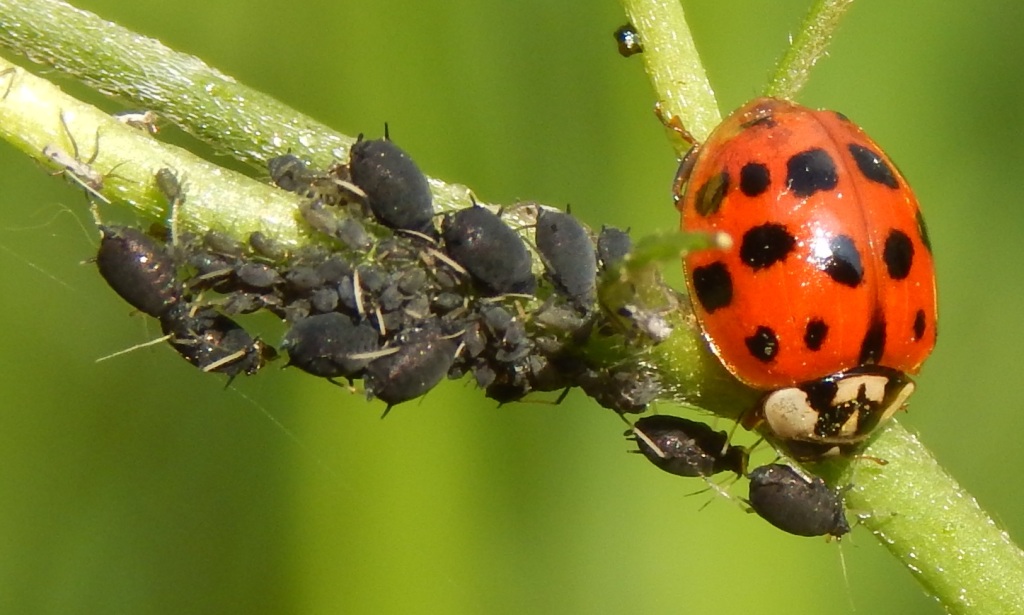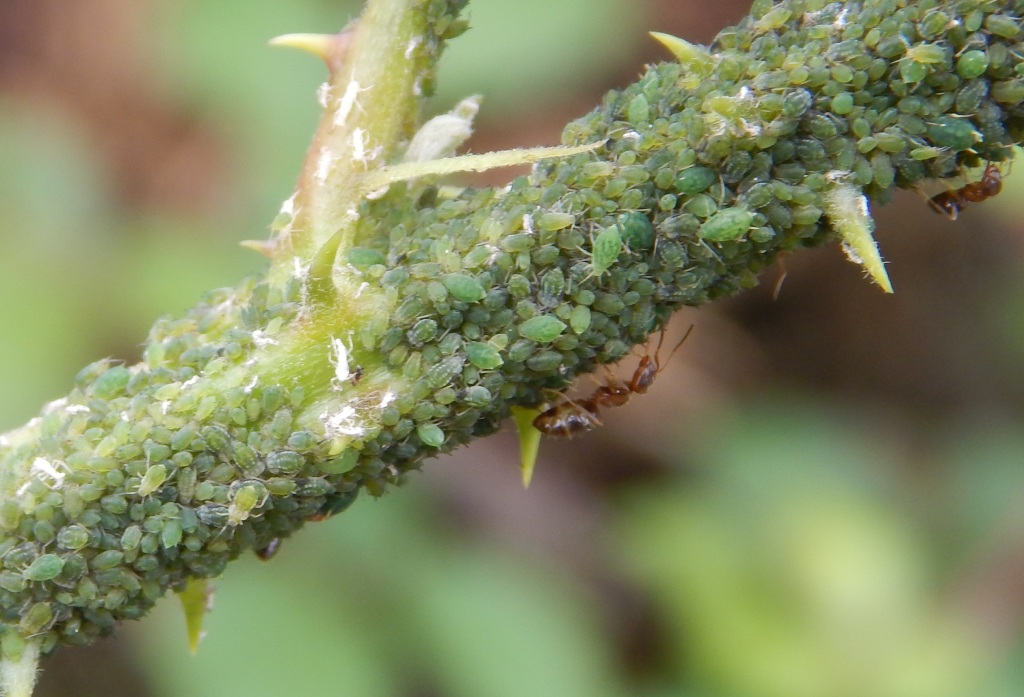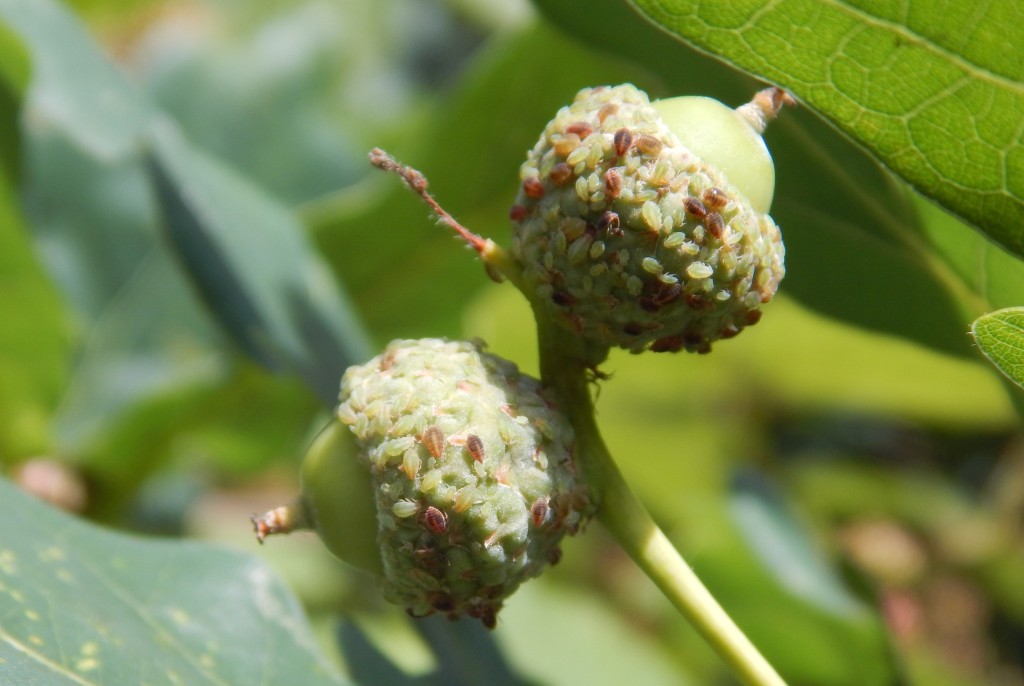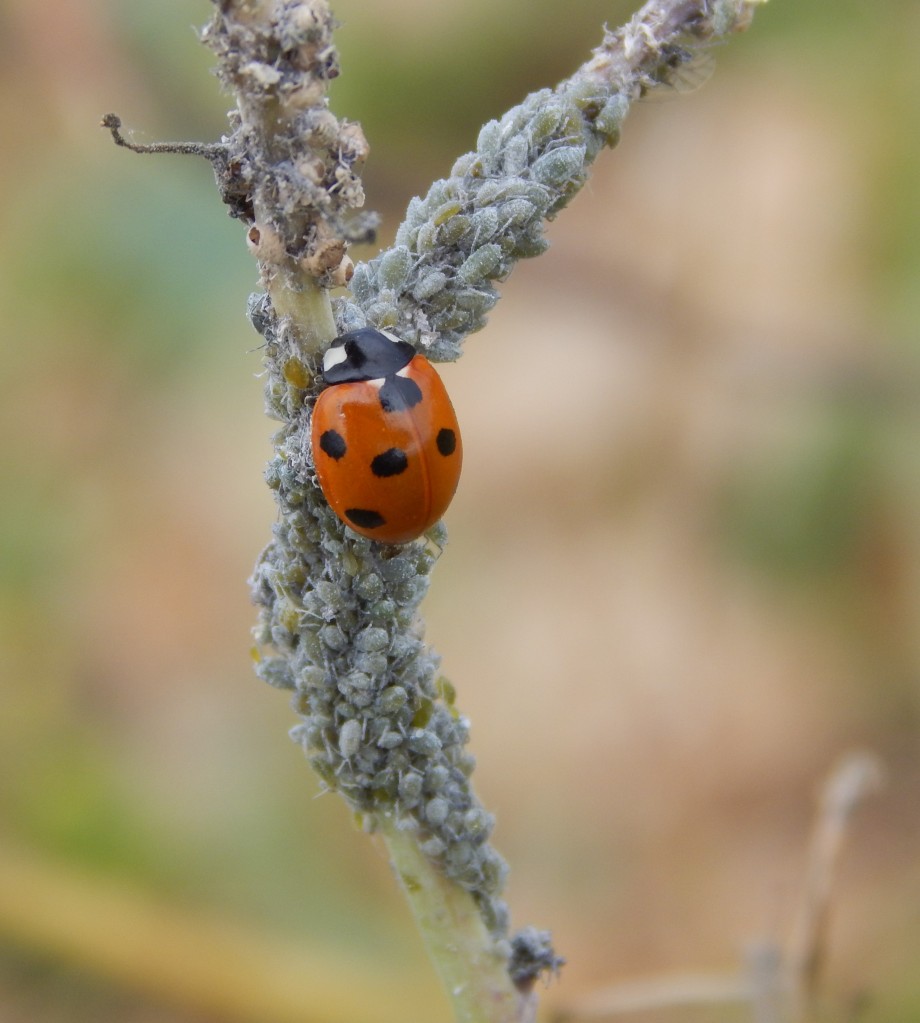
[217] Macrosiphum rosae, Rose Aphid and Other Aphids
Introduction
Macrosiphum rosae, the Rose Aphid, is just one example of thousands of species of aphids (sometimes called greenfly or blackfly or whitefly) that are normally just considered as unwanted garden pests.
Taxonomy
Kingdom – Animals
Phylum – Arthropods
Class – Insects
Order- Hemiptera
Suborder – Sternorrhyncha
Infraorder – Aphidomorpha (Aphids and a few others)
Superfamily – Aphidoidea (Aphididae and some extinct families)
Family – Aphididae (Aphids)
Subfamily – Aphidinae
Tribe – Macrosiphini
Genus – Macrosiphum
Scientific Name – Macrosiphum rosae
See text for other members of Aphididae
Name
Aphides (singular aphis) is New Latin, invented by Linnaeus, of uncertain origin. It may come from Ancient Greek apheides meaning unsparing or lavishly borrowed – from their voracity and speed of reproduction. The name of the family comes from the genus Aphis.
They are generally just called aphids informally. The ending -idae is standard for families and sometimes Aphidae is used erroneously for Aphididae.
Macrosiphum is from Greek macro-siphon, meaning large-tube. Many aphid genera have -siphum or -siphon in their names, derived from their cornicles. The genus Macrosiphum does have some of the largest aphid species.
Aphids
The family Aphididae comes within the order of true bugs, Hemiptera and its species are hemimetabolous. There are several thousand species of aphids, generally soft-bodied and pear-shaped. Most have a pair of tubes on their abdomens called cornicles used to excrete alarm pheromones when attacked.
Aphids are generally green but can be red, brown, black or almost colourless. The same species may have different coloured forms.
They feed on plant sap and excrete honeydew, which is used as a food by ants and bees. Many types are actively farmed by ants for their honeydew.
As for many taxa, classification is not agreed, with up to dozen subfamilies being recognized.
They usually have both wingless (apterous) and winged (alate) forms in a complex life cycle. Generally flightless females may give birth parthogenetically (without sex) to live female nymphs, which may already be pregnant. They mature rapidly and breed profusely – with up to thirty or forty generations in a year. These are all effectively clones. Winged females may develop later in the season and a phase of sexual reproduction may occur later with insects often overwintering as eggs. (In greenhouse conditions generations of wingless forms may persist for years.)
Most species feed on one type of plant only; some alternate between two types; and some are more general in their food sources.
Because they are so destructive to crops, they are sometimes subject to biological control Many of their natural enemies are insects, particularly ladybirds.
Macrosiphum rosae
The Rose Aphid primarily feeds on [303-4] Roses, particularly the growing tips and buds. In late summer when the flowers emerge, some winged forms move to other rosebushes or other host plants such as [170] Holly, [117] Teasel and others. In the autumn winged males are produced and eggs are laid on rosebushes, where they overwinter.
They vary from green to pink or red-brown.





Other Notes
You are very lucky if you have a garden and don’t see aphids. Even the tribe Macrosiphini has about three hundred genera so identification to species level is not easy.
They may be very specific about their choice of host plant but I don’t think it works in reverse. Even if Rose aphids are only found on Roses, that doesn’t mean that every aphid found on a rosebush is a Rose Aphid! I make no claims about my identifications but I think the ones above are Macrosiphum rosae.
See also
Here are some other aphids on other plants.




You will, of course, notice [086] Seven-spotted Ladybird in the last picture feeding on aphids. The header picture features [169] Harlequin Ladybird.
